How to Take Amoxicillin 500mg: Dosage, Uses, and Side Effects Guide
How does amoxicillin 500mg work. What are the common side effects of amoxicillin. When should you take amoxicillin 500mg. How long does it take for amoxicillin to work. Can you drink alcohol while taking amoxicillin 500mg.
Understanding Amoxicillin: An Overview of the Antibiotic
Amoxicillin is a widely prescribed antibiotic used to treat various bacterial infections in both adults and children. As a member of the penicillin family, it works by inhibiting bacterial cell wall synthesis, effectively stopping the growth and spread of harmful bacteria.
Available in multiple forms, including capsules, tablets, chewable tablets, and liquid suspension, amoxicillin offers flexibility in administration to suit different patient needs. Its generic status makes it a cost-effective option compared to brand-name alternatives, without compromising on efficacy.
Forms and Strengths of Amoxicillin
- Oral capsules: 250 mg and 500 mg
- Oral tablets: 500 mg and 875 mg
- Chewable tablets: 125 mg and 250 mg
- Liquid suspension: 125 mg/5 mL, 200 mg/5 mL, 250 mg/5 mL, and 400 mg/5 mL
Common Uses of Amoxicillin 500mg
Amoxicillin 500mg is prescribed for a range of bacterial infections. Its broad-spectrum activity makes it effective against numerous pathogens, leading to its widespread use in medical practice.
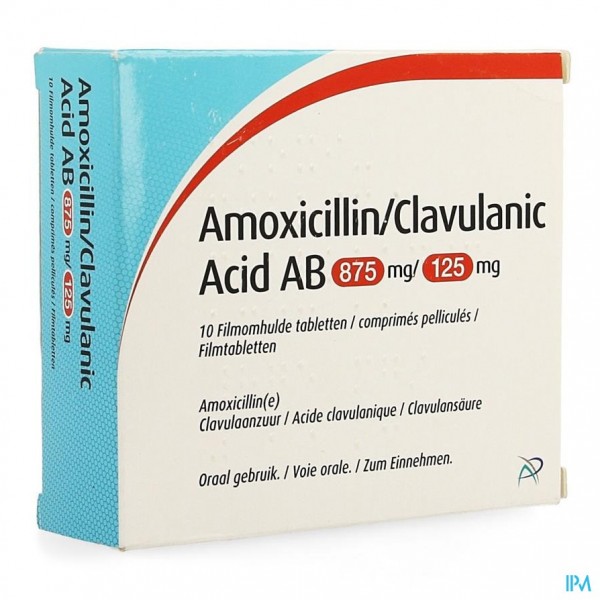
Typical Infections Treated with Amoxicillin 500mg
- Respiratory tract infections (bronchitis, pneumonia)
- Ear, nose, and throat infections (sinusitis, tonsillitis)
- Urinary tract infections
- Skin and soft tissue infections
- Dental infections
- Helicobacter pylori infections (in combination therapy)
Is amoxicillin effective against all types of infections? No, amoxicillin is specifically designed to combat bacterial infections. It is not effective against viral infections such as the common cold or flu. Your healthcare provider will determine if amoxicillin is appropriate for your specific condition.
Proper Dosage and Administration of Amoxicillin 500mg
The correct dosage of amoxicillin 500mg varies depending on several factors, including the type and severity of the infection, the patient’s age, weight, and overall health status. Always follow your healthcare provider’s instructions regarding dosage and duration of treatment.
General Dosage Guidelines for Adults
- Mild to moderate infections: 500 mg every 12 hours or 250 mg every 8 hours
- Severe infections: 875 mg every 12 hours or 500 mg every 8 hours
- Treatment duration typically ranges from 7 to 14 days, depending on the infection
How should you take amoxicillin 500mg? Amoxicillin can be taken with or without food. However, taking it with food may help reduce stomach upset. If using the liquid suspension, shake the bottle well before each dose and use a measuring device to ensure accurate dosing.
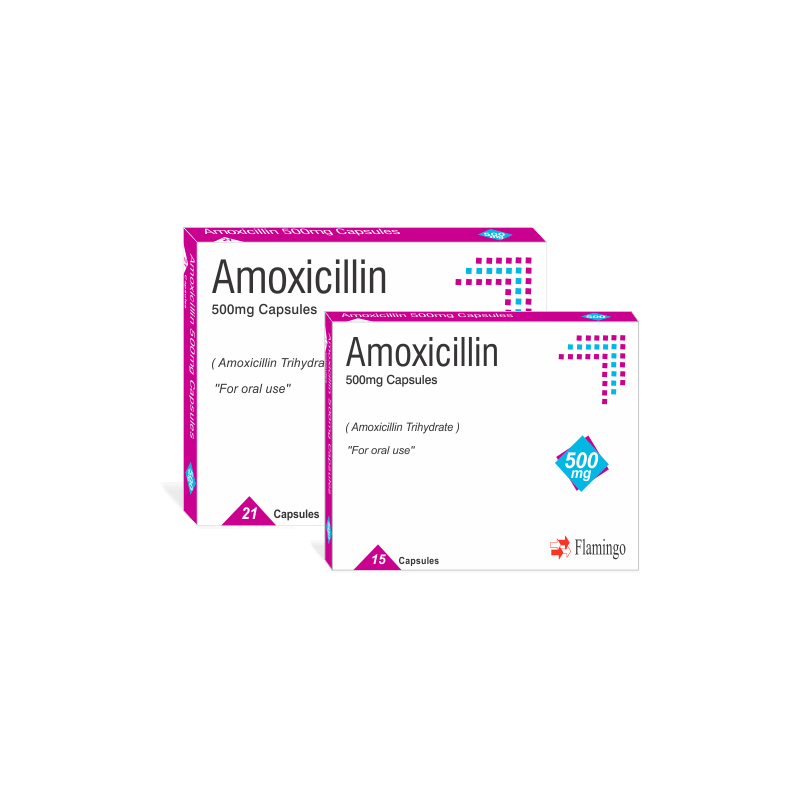
Potential Side Effects and Precautions
While amoxicillin is generally well-tolerated, it can cause side effects in some individuals. Understanding these potential reactions can help patients recognize and report any issues to their healthcare provider promptly.
Common Side Effects
- Gastrointestinal disturbances (nausea, vomiting, diarrhea)
- Skin rash
- Headache
- Dizziness
Serious Side Effects (Rare)
- Severe allergic reactions (anaphylaxis)
- Clostridioides difficile-associated diarrhea
- Liver problems
- Blood disorders
Can amoxicillin cause allergic reactions? Yes, some individuals may experience allergic reactions to amoxicillin, ranging from mild skin rashes to severe anaphylaxis. If you have a known penicillin allergy, inform your healthcare provider before taking amoxicillin.
Drug Interactions and Contraindications
Amoxicillin can interact with other medications, potentially altering its effectiveness or increasing the risk of side effects. It’s crucial to inform your healthcare provider about all medications, supplements, and herbal products you’re taking.
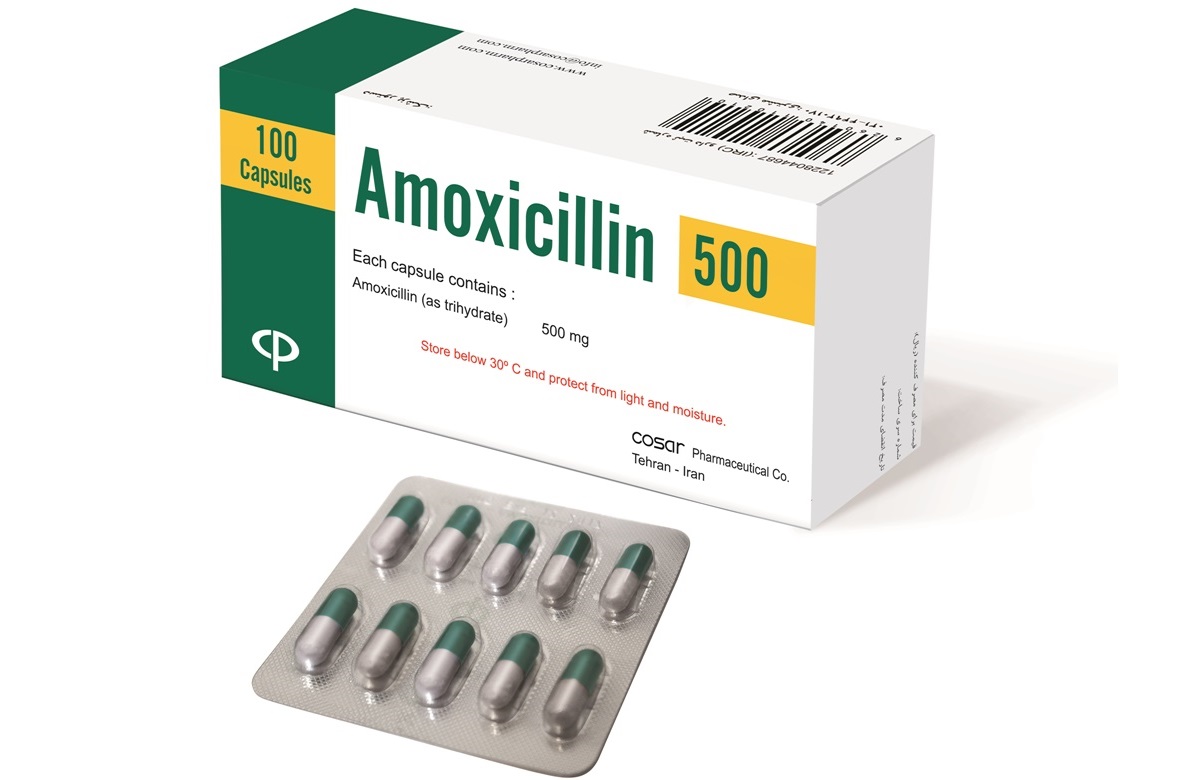
Notable Drug Interactions
- Oral contraceptives (may reduce effectiveness)
- Probenecid (increases amoxicillin levels)
- Allopurinol (increased risk of skin rash)
- Anticoagulants (may require dose adjustment)
Should you avoid alcohol while taking amoxicillin 500mg? While there’s no direct interaction between amoxicillin and alcohol, consuming alcohol can potentially exacerbate certain side effects like stomach upset and dizziness. It’s generally advisable to limit alcohol consumption during antibiotic treatment.
Special Considerations for Specific Patient Groups
Certain patient populations may require special attention when prescribed amoxicillin 500mg. Healthcare providers will consider these factors when determining the appropriate dosage and monitoring requirements.
Considerations for Various Patient Groups
- Pregnant and breastfeeding women: Generally considered safe, but should be used under medical supervision
- Elderly patients: May require dose adjustment due to decreased kidney function
- Patients with kidney impairment: Dosage reduction may be necessary
- Individuals with a history of allergic reactions to penicillins or cephalosporins: Increased risk of allergic reactions
How does amoxicillin affect pregnancy? Amoxicillin is classified as FDA pregnancy category B, indicating no evidence of harm to the fetus in animal studies. However, pregnant women should only use amoxicillin when clearly needed and under medical supervision.
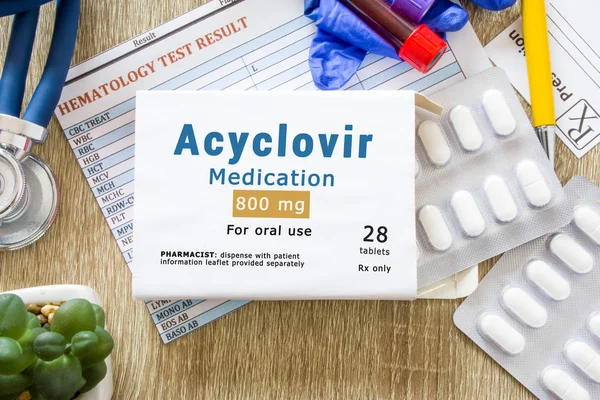
Monitoring Treatment Effectiveness and Completion
Proper monitoring during amoxicillin treatment is essential to ensure its effectiveness and detect any potential issues early. Patients should be aware of signs that indicate improvement or the need for further medical attention.
Signs of Improvement
- Reduction in symptoms (e.g., fever, pain, inflammation)
- Increased energy levels
- Improved appetite
Warning Signs Requiring Medical Attention
- Worsening of symptoms after initial improvement
- Severe diarrhea or abdominal pain
- Signs of allergic reaction (rash, itching, swelling)
- Unusual bleeding or bruising
How long does it take for amoxicillin to work? While some patients may notice improvement within a few days, it’s crucial to complete the entire prescribed course of antibiotics, even if symptoms subside. This helps prevent the development of antibiotic-resistant bacteria.
Proper Storage and Disposal of Amoxicillin 500mg
Correct storage and disposal of amoxicillin are important for maintaining its effectiveness and preventing accidental ingestion or environmental contamination.
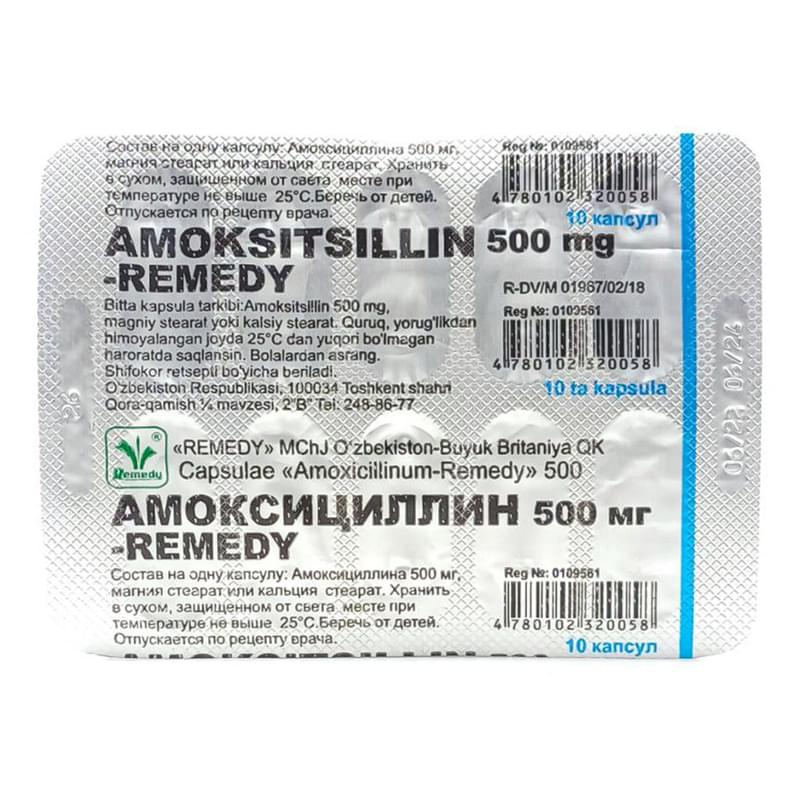
Storage Guidelines
- Store at room temperature, away from heat, moisture, and direct light
- Keep liquid suspension refrigerated and discard after 14 days
- Keep out of reach of children and pets
Disposal Methods
- Do not flush unused medication down the toilet or drain
- Use community drug take-back programs when available
- Mix with undesirable substance (e.g., used coffee grounds) and dispose in household trash if no take-back options exist
Can you keep leftover amoxicillin for future use? No, it’s not recommended to save antibiotics for future use. Using antibiotics without proper medical supervision can lead to antibiotic resistance and potentially dangerous outcomes.
In conclusion, amoxicillin 500mg is a versatile and effective antibiotic when used appropriately. By understanding its proper use, potential side effects, and important considerations, patients can maximize the benefits of this medication while minimizing risks. Always consult with your healthcare provider for personalized advice and follow their instructions carefully to ensure the best possible outcome from your antibiotic treatment.

Side Effects, Dosage, Uses, and More
If you have a bacterial infection, your doctor may recommend treatment with amoxicillin. It’s a commonly prescribed generic drug that’s used to treat bacterial infections in adults and children.
Read on to learn more about amoxicillin’s uses, side effects, dosage, and other important information about the drug.
Amoxicillin basics
Amoxicillin is an oral antibiotic that comes in following forms:
- capsule that you swallow
- tablet that you swallow
- chewable tablet
- powder that’s mixed with water to make a liquid suspension (a kind of liquid mixture) that you swallow
Amoxicillin brand-name versions
Amoxicillin is a generic drug, which means it’s an exact copy of the active drug in a brand-name medication. The brand-name medication that amoxicillin is based on was called Amoxil. But this brand-name drug is no longer available.
Generic drugs are thought to be as safe and effective as the brand-name drug they’re based on.
In general, generics usually cost less than brand-name drugs.
If you’d like to know more about generic drugs, talk with your doctor. And explore this Healthline article to learn more about the differences between generic and brand-name drugs.
Like most drugs, amoxicillin may cause mild or serious side effects. The lists below describe some of the more common side effects that amoxicillin may cause. These lists don’t include all possible side effects.
Keep in mind that side effects of a drug can depend on:
- your age
- other health conditions you have
- other medications you take
Your doctor or pharmacist can tell you more about the potential side effects of amoxicillin. They can also suggest ways to help reduce side effects.
Mild side effects
Here’s a short list of some of the mild side effects that amoxicillin can cause. To learn about other mild side effects, talk with your doctor or pharmacist or read amoxicillin’s prescribing information.
Mild side effects of amoxicillin that have been reported include:
- digestive side effects, such as:
- diarrhea
- nausea
- vomiting
- rash
- mild allergic reaction*
Mild side effects of many drugs may go away within a few days to a couple of weeks. But if they become bothersome, talk with your doctor or pharmacist.
* To learn more about this side effect, see the “Allergic reaction” section below.
Serious side effects
Serious side effects from amoxicillin can occur, but they aren’t common. If you have serious side effects from amoxicillin, call your doctor right away. But if you think you’re having a medical emergency, call 911 or your local emergency number.
Serious side effects of amoxicillin that have been reported include:
- diarrhea caused by Clostridioides difficile (commonly called C. diff), which may occur more than 2 months after taking amoxicillin
- other bacterial or fungal superinfection (an infection occurring after or in addition to an earlier infection)
- severe allergic reaction*
* To learn more about this side effect, see the “Allergic reaction” section below.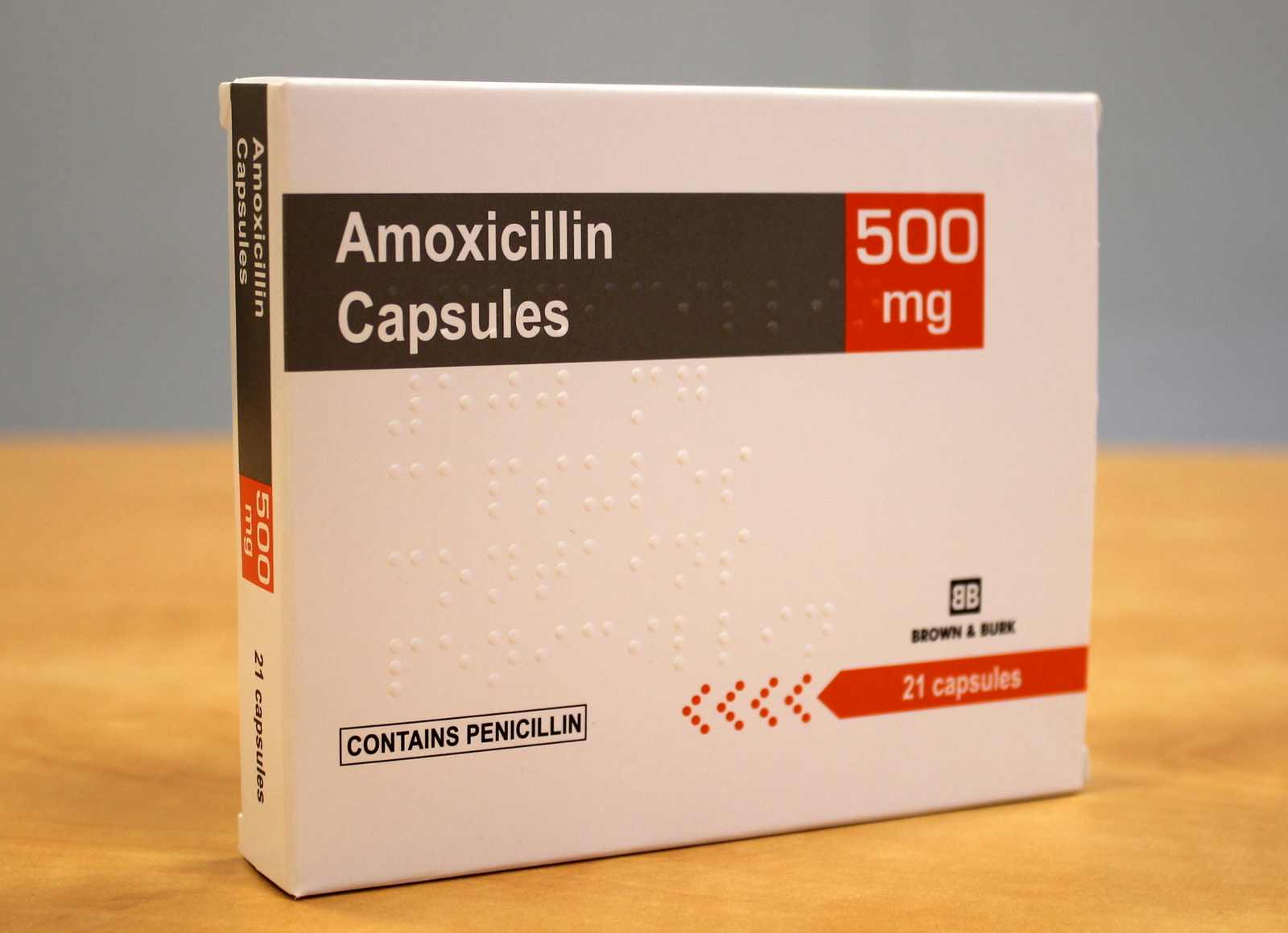
Allergic reaction
Some people may have an allergic reaction to amoxicillin.
Symptoms of a mild allergic reaction can include:
- skin rash
- itchiness
- flushing (temporary warmth, redness, or deepening of skin color)
A more severe allergic reaction is rare but possible. Symptoms of a severe allergic reaction can include swelling under your skin, usually in your eyelids, lips, hands, or feet. They can also include swelling of your tongue, mouth, or throat, which can cause trouble breathing.
Call your doctor right away if you have an allergic reaction to amoxicillin. But if you think you’re having a medical emergency, call 911 or your local emergency number.
Your doctor will recommend the dosage of amoxicillin that’s right for you. Below are commonly used dosages, but always take the dosage your doctor prescribes.
Forms and strengths
Amoxicillin comes in four forms:
- oral capsule that you swallow
- oral tablet that you swallow
- tablet that you chew
- powder that’s mixed with water to make a liquid suspension (a kind of liquid mixture)
Amoxicillin suspension is usually a pink liquid. It often has a bubble gum or fruity flavor. But the drug may also come in other colors or flavors, depending on the drugmaker.
It often has a bubble gum or fruity flavor. But the drug may also come in other colors or flavors, depending on the drugmaker.
If you have questions about the drug’s appearance or flavor, talk with your pharmacist. At some pharmacies, pharmacists can change the flavor of liquid medications, which may make it easier for a child to take.
The chart below lists the strengths amoxicillin comes in.
| Form of amoxicillin | Strengths |
| oral capsule | • 250 milligrams (mg) • 500 mg |
| oral tablet | • 500 mg • 875 mg |
| chewable tablet | • 125 mg • 250 mg |
| liquid suspension | • 125 mg per 5 milliliters (mg/mL) • 200 mg/5 mL • 250 mg/5 mL • 400 mg/5 mL |
Recommended dosages
The dosage of amoxicillin your doctor prescribes depends on several factors. Examples of these factors include the kind of infection you have and how severe it is.
You’ll take a dose of amoxicillin once every 8 hours or 12 hours. If you take the drug twice per day, you’ll take one dose every 12 hours. If your doctor prescribes the drug three times per day, you’ll take one dose approximately every 8 hours.
Amoxicillin is usually taken for 10 days to 14 days. But certain kinds of infections only require a single dose of amoxicillin. Others require longer treatment periods.
Be sure to take all of your prescribed doses, even if you start feeling better. Stopping antibiotics too early may mean your infection isn’t treated completely. This could raise your risk of the bacteria becoming resistant to antibiotics.
Your doctor can tell you more about the dosage of amoxicillin that’s right for you. And to learn more about amoxicillin’s dosage, see this article.
Questions about amoxicillin’s dosage
Below are some common questions about amoxicillin’s dosage.
- What if I miss a dose of amoxicillin? If you miss a dose of amoxicillin, take it as soon as you remember.
 But if it’s almost time for your next dose, just skip the missed dose and take your next dose at its regular time.
But if it’s almost time for your next dose, just skip the missed dose and take your next dose at its regular time. - Will I need to take amoxicillin long term? It’s not likely. Amoxicillin is an antibiotic drug that’s usually taken short term to treat certain bacterial infections.
- How long does amoxicillin take to work? Amoxicillin starts working right way to kill certain kinds of bacteria. But it may take at least 2 days to 3 days of treatment before your symptoms are eased.
Find answers to some commonly asked questions about amoxicillin.
How is amoxicillin different from the combination drug amoxicillin/clavulanate?
Amoxicillin/clavulanate (Augmentin) is not the same as amoxicillin. Amoxicillin/clavulanate contains amoxicillin, but it also contains a second active ingredient, clavulanate. (An active ingredient is what makes a drug work.) These two active ingredients work together to kill various kinds of bacteria.
These drugs have some of the same uses, but also others that vary. For example, both drugs treat acute bacterial sinusitis (a short-term sinus infection caused by bacteria). But only amoxicillin is usually prescribed as part of a combination treatment for Helicobacter pylori. (This is a kind of bacteria that can infect your digestive tract and cause ulcers.)
If you have other questions about how amoxicillin compares with amoxicillin/clavulanate, talk with your doctor or pharmacist.
Is amoxicillin an antibiotic?
Yes, amoxicillin is an antibiotic. Specifically, amoxicillin belongs to a group of drugs called beta-lactam antibiotics. Examples of other drugs in this group are penicillin and ampicillin.
Amoxicillin is considered a broad-spectrum antibiotic. It’s used to treat infections caused by a wide variety of bacteria.
If you have questions about how amoxicillin works, talk with your doctor or pharmacist.
How does amoxicillin compare with penicillin and azithromycin?
Amoxicillin, penicillin, and azithromycin are all antibiotic drugs that treat a variety of bacterial infections.
Amoxicillin and penicillin belong to a group of drugs called beta-lactam antibiotics. People who’ve had an allergic reaction to penicillin may have the same reaction to amoxicillin.
Azithromycin (Zithromax) is not in the same group of drugs as penicillin and amoxicillin. Azithromycin belongs to a group of drugs called macrolide antibiotics.
If you have questions about which antibiotic is right for you, talk with your doctor.
Does amoxicillin cause hives?
It’s possible. This side effect wasn’t seen in amoxicillin’s studies, but hives have been reported in people taking amoxicillin after the drug became available for use.
Hives are often a symptom of an allergic reaction. If you develop hives while taking amoxicillin, talk with your doctor right away. They’ll likely have you stop taking the drug. They may have you switch to a different antibiotic to treat your infection. In addition, your doctor may recommend treating your hives with an antihistamine you swallow, such as diphenhydramine (Benadryl).
Does amoxicillin expire?
Yes, amoxicillin does expire. How long amoxicillin remains safe to take depends on several factors, such as the form you take. If you’re prescribed amoxicillin capsules or tablets, your pharmacist will add an expiration date to the label on the packaging. This is usually 1 year from the date they dispensed the medication. You should discard any unused medication after this date.
If you’re prescribed the liquid suspension form, your pharmacist will add water to the bottle of powder and mix it into a suspension. The suspension expires 14 days after the date it’s mixed. You should discard any unused portion of the suspension after this timeframe.
If you have questions about storing or discarding medication, talk with your pharmacist.
Amoxicillin is used to treat certain kinds of bacterial infections.
Amoxicillin works by attaching to a specific protein on certain kinds of bacterial cells. This causes the cell’s walls to break apart, killing the bacteria.
Amoxicillin is used to treat:
- bacterial infections, including:
- ear, nose, or throat infections, such as strep throat and sinus infection
- genitourinary tract infections, such as urinary tract infection (UTI) and gonorrhea (a sexually transmitted infection)
- lower respiratory tract infections, such as pneumonia and bronchitis
- skin infections
- Helicobacter pylori (a kind of bacteria that can infect your digestive tract and cause ulcers)*
The uses listed above are approved by the Food and Drug Administration (FDA). Doctors may also prescribe amoxicillin off-label for other uses, such as tooth infections. (With off-label use, doctors prescribe a drug for a purpose other than what it’s approved for.)
Amoxicillin is also commonly prescribed off-label for use before dental procedures to help prevent endocarditis in people with certain heart conditions. (With endocarditis, you have severe inflammation of the inside lining of the heart. The condition may be caused by a bacterial infection.)
The condition may be caused by a bacterial infection.)
* For this use, amoxicillin is prescribed together with one or two other drugs.
Some important things to discuss with your doctor when considering treatment with amoxicillin include:
- your overall health
- any medical conditions you may have
- other medications you take
These and other considerations to discuss with your doctor are described below.
Interactions
Taking a medication with certain vaccines, foods, and other things can affect how the medication works. These effects are called interactions.
Before taking amoxicillin, be sure to tell your doctor about all medications you take (including prescription and over-the-counter kinds). Also, describe any vitamins, herbs, or supplements you use. Your doctor or pharmacist can tell you about any interactions these items may cause with amoxicillin.
For information about drug-condition interactions, see the “Warnings” section below.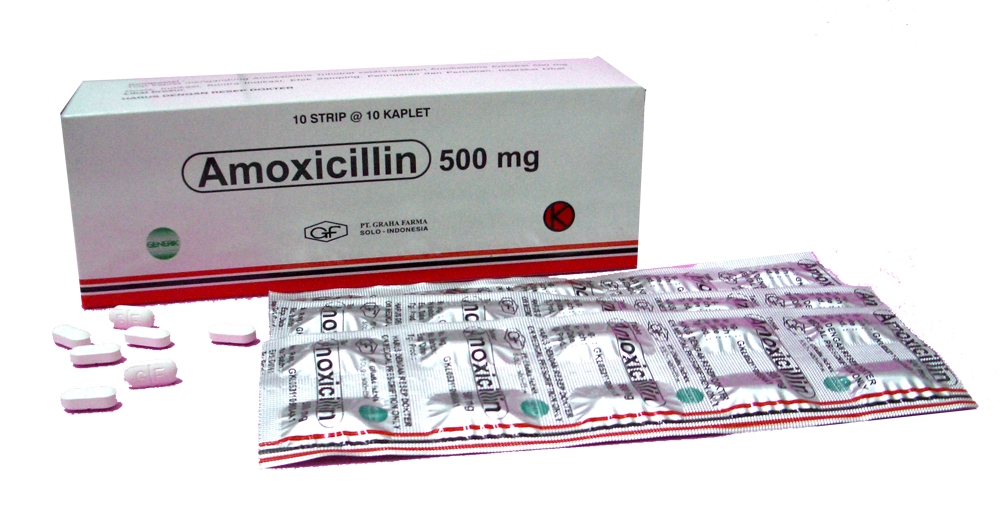
Interactions with drugs or supplements
Amoxicillin can interact with several kinds of drugs. These drugs include:
- blood thinners such as warfarin (Coumadin)
- birth control pills
- the gout drugs probenecid (Probalan) and allopurinol (Zyloprim)
- certain other antibiotics
This list does not contain all kinds of drugs that may interact with amoxicillin. Your doctor or pharmacist can tell you more about these interactions and any others that may occur with amoxicillin.
Other interactions
Taking amoxicillin may cause a false-positive result on urine glucose (sugar) tests. (A false-positive means the test shows glucose in your urine, even though it isn’t actually there). If you have questions about monitoring your urine glucose level while taking amoxicillin, talk with your doctor.
Warnings
Amoxicillin can sometimes cause harmful effects in people who have certain conditions. This is known as a drug-condition interaction. Other factors may also affect whether amoxicillin is a good treatment option for you.
Other factors may also affect whether amoxicillin is a good treatment option for you.
Talk with your doctor about your health history before you take amoxicillin. Factors to consider include those described below.
Mononucleosis. Amoxicillin may cause a skin rash. If you have mononucleosis (mono), you have a higher risk of developing a rash while taking amoxicillin. Talk with your doctor about other treatment options, as they likely won’t prescribe amoxicillin if you have mono.
Severe kidney problems. If you have severe kidney problems, such as chronic kidney disease, talk with your doctor before taking amoxicillin. Depending on your kidney function, your doctor may prescribe a lower dosage of the drug for you. Or, in some cases, they may recommend a different treatment option.
Allergic reaction. If you’ve had an allergic reaction to other beta-lactam antibiotics such as penicillin, or amoxicillin or any of its ingredients, your doctor will likely not prescribe amoxicillin. Ask them what other medications are better options for you.
Ask them what other medications are better options for you.
Amoxicillin and alcohol
Amoxicillin doesn’t interact with alcohol. But your doctor may still recommend that you limit alcohol consumption while taking amoxicillin. This is because amoxicillin may cause digestive side effects, such as nausea, vomiting, and diarrhea. Drinking alcohol can also cause these side effects.
Drinking alcohol during treatment with amoxicillin could raise your risk of digestive side effects, or it could make any digestive side effects that you experience more severe.
If you have questions about how much alcohol is safe to drink while you’re taking amoxicillin, talk with your doctor or pharmacist.
Pregnancy and breastfeeding
Doctors commonly prescribe amoxicillin to people who are pregnant. The drug is generally considered safe to take during pregnancy.
Amoxicillin passes into breast milk in small amounts. Since the drug became available for use, some people who took amoxicillin while breastfeeding have reported mild side effects in their child who is breastfed. These included rash, diarrhea, and thrush.
These included rash, diarrhea, and thrush.
If you have questions about taking amoxicillin while pregnant or breastfeeding, talk with your doctor.
Costs of prescription drugs can vary depending on many factors. These factors include your insurance coverage (if you have it) and which pharmacy you use.
Financial assistance to help you pay for amoxicillin may be available. Medicine Assistance Tool and NeedyMeds are two websites that provide resources to help reduce the cost of amoxicillin.
These websites also offer tools to help you find low cost healthcare and certain educational resources. To learn more, visit their websites.
Do not take more amoxicillin than your doctor prescribes. Taking more than this can lead to serious side effects.
Symptoms of overdose
An overdose of amoxicillin may cause kidney failure. Symptoms of kidney problems can include:
- urinating less than usual
- swelling in your lower legs or any part of your body
- confusion
- shortness of breath
- fatigue (low energy)
What to do in case you take too much amoxicillin
Call your doctor if you think you’ve taken too much amoxicillin. You can also call 800-222-1222 to reach the American Association of Poison Control Centers or use its online resource. But if you have severe symptoms, immediately call 911 or your local emergency number. Or go to the nearest emergency room.
You can also call 800-222-1222 to reach the American Association of Poison Control Centers or use its online resource. But if you have severe symptoms, immediately call 911 or your local emergency number. Or go to the nearest emergency room.
Your doctor will explain how you should take amoxicillin. They’ll also explain how much to take and how often. Be sure to follow your doctor’s instructions.
Amoxicillin comes in four forms:
- oral capsule that you swallow
- oral tablet that you swallow
- tablet that you chew
- powder that’s mixed* with water to make a liquid suspension (a kind of liquid mixture)
Amoxicillin suspension is usually a pink liquid. It often has a bubble gum or fruity flavor. But the drug may also come in other colors or flavors, depending on the drugmaker.
If you have questions about the drug’s appearance or flavor, talk with your pharmacist. At some pharmacies, pharmacists can change the flavor of liquid medications, which may make it easier for your child to take.
Be sure to finish all of the amoxicillin you’re prescribed, even if you start to feel better. Not finishing a course of an antibiotic may cause your infection to worsen or return. It may also raise your risk of the bacteria becoming resistant to antibiotics.
* A pharmacist or another healthcare professional will mix the medication before they dispense it to you. You won’t have to add water or mix the drug yourself.
Taking amoxicillin
The instructions for taking amoxicillin depend on the form you’re prescribed:
- Oral capsule and oral tablet. Swallow whole.
- Chewable tablets. Chew or crush thoroughly before swallowing.
- Liquid suspension. Swallow by itself or mix it into fruit juice, water, ginger ale, milk (or for babies, formula), or another cold drink. If you mix the amoxicillin suspension into one of these liquids, drink the entire amount right away after mixing it.

Be sure to shake the amoxicillin liquid suspension before each use. You should use an oral syringe or a medicine cup to measure your dose accurately.
All forms of amoxicillin can be stored at room temperature. The liquid suspension can also be stored in the refrigerator. This isn’t required, but refrigeration may help improve the taste of the suspension.
Accessible medication containers and labels
If it’s hard for you to read the label on your prescription, tell your doctor or pharmacist. Certain pharmacies provide medication labels that:
- have large print
- use braille
- contain a code you can scan with a smartphone to change the text to audio
Your doctor or pharmacist may be able to recommend a pharmacy that offers these options if your current pharmacy doesn’t.
Also, if you’re having trouble opening your medication bottles, let your pharmacist know. They may be able to put amoxicillin in an easy-open container. Your pharmacist may also recommend tools to help make it simpler to open the drug’s container.
Your pharmacist may also recommend tools to help make it simpler to open the drug’s container.
Taking amoxicillin with other drugs
Amoxicillin is used with other drugs to treat Helicobacter pylori (a kind of bacteria that can infect your digestive tract and cause ulcers). For this use, amoxicillin is usually prescribed along with clarithromycin and lansoprazole (Prevacid).
Questions about taking amoxicillin
Below are some common questions about taking amoxicillin.
- Can amoxicillin be chewed, crushed, or split? Amoxicillin oral capsules and oral tablets should be swallowed whole. Amoxicillin chewable tablets should be chewed or crushed thoroughly before swallowing. With the liquid suspension, you have two options. You can either swallow your dose or you can mix it into milk, fruit juice, water, ginger ale, or another cold drink. A child’s dose of suspension may also be mixed into formula. If mixing the suspension into one of these liquids, drink the entire amount right away after mixing it.

- Should I take amoxicillin with food? You can take amoxicillin with food or on an empty stomach. Taking amoxicillin with food may help prevent or reduce digestive side effects, such as nausea.
- Is there a best time of day to take amoxicillin? No, but the spacing of amoxicillin doses is important if you take multiple doses per day. Usually, amoxicillin doses are taken at least 8 to 12 hours apart. If you take two doses per day, you’ll take one dose approximately every 12 hours. If your doctor prescribes amoxicillin three times per day, you’ll take one dose approximately every 8 hours.
Questions for your doctor
You may have questions about amoxicillin and your treatment plan. It’s important to discuss all your concerns with your doctor.
Here are a few tips that might help guide your discussion:
- Before your appointment, write down questions such as:
- How will amoxicillin affect my body, mood, or lifestyle?
- Bring someone with you to your appointment if doing so will help you feel more comfortable.
- If you don’t understand something related to your condition or treatment, ask your doctor to explain it to you.
Remember, your doctor and other healthcare professionals are available to help you. And they want you to get the best care possible. So don’t be afraid to ask questions or offer feedback on your treatment.
If you have a certain kind of bacterial infection, your doctor may recommend amoxicillin. It’s a commonly prescribed antibiotic drug.
Before taking amoxicillin to treat an infection, talk with your doctor about what you can expect from treatment. Questions to consider asking include:
- Can my infection pass to others even though I’m taking amoxicillin?
- How many days should I take amoxicillin?
- What could happen if I don’t finish my entire course of this antibiotic?
- If I have side effects that cause me to stop taking amoxicillin, how will you treat my infection?
To learn more about amoxicillin, see this article:
- Amoxicillin and Cost: What You Need to Know
To get information on different conditions and tips for improving your health, subscribe to any of Healthline’s newsletters.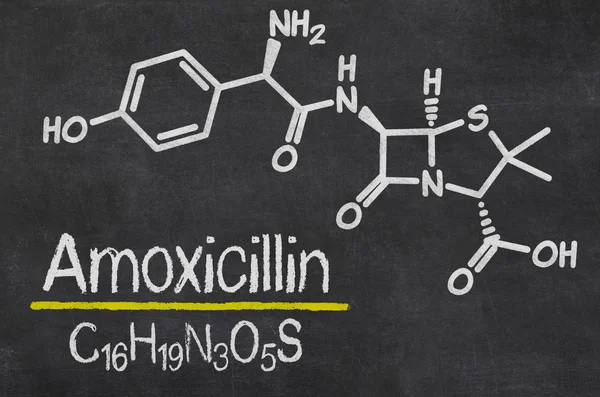 You may also want to check out the online communities at Bezzy. It’s a place where people with certain conditions can find support and connect with others.
You may also want to check out the online communities at Bezzy. It’s a place where people with certain conditions can find support and connect with others.
Disclaimer: Healthline has made every effort to make certain that all information is factually correct, comprehensive, and up to date. However, this article should not be used as a substitute for the knowledge and expertise of a licensed healthcare professional. You should always consult your doctor or another healthcare professional before taking any medication. The drug information contained herein is subject to change and is not intended to cover all possible uses, directions, precautions, warnings, drug interactions, allergic reactions, or adverse effects. The absence of warnings or other information for a given drug does not indicate that the drug or drug combination is safe, effective, or appropriate for all patients or all specific uses.
How Long Does Amoxicillin Take to Work?
Amoxicillin fights infections in the body within an hour after taking it. The penicillin-based medication gets its strength from consistent use of multiple doses per day. Amoxicillin often relieves symptoms in less than 72 hours and stays in your system for 24 hours.
The penicillin-based medication gets its strength from consistent use of multiple doses per day. Amoxicillin often relieves symptoms in less than 72 hours and stays in your system for 24 hours.
How Quickly Does Amoxicillin Work?
Amoxicillin is a fast-acting antibiotic that begins working almost immediately after someone takes a dose, and it reaches full effectiveness about an hour or two later.
However, taking amoxicillin does not relieve symptoms of infection immediately. It takes most people around 72 hours to feel better when taking antibiotics, though some people notice improvements sooner within one or two days (24-48 hours).
A person’s antibiotic resistance may also cause amoxicillin to take longer to work. This occurs when bacteria adapt their biology enough to avoid being killed by the antibiotic.
Taking antibiotics frequently may lead to the bacteria in your body developing more resistance to the medications. Always let your doctor know if your antibiotics do not seem to work as intended.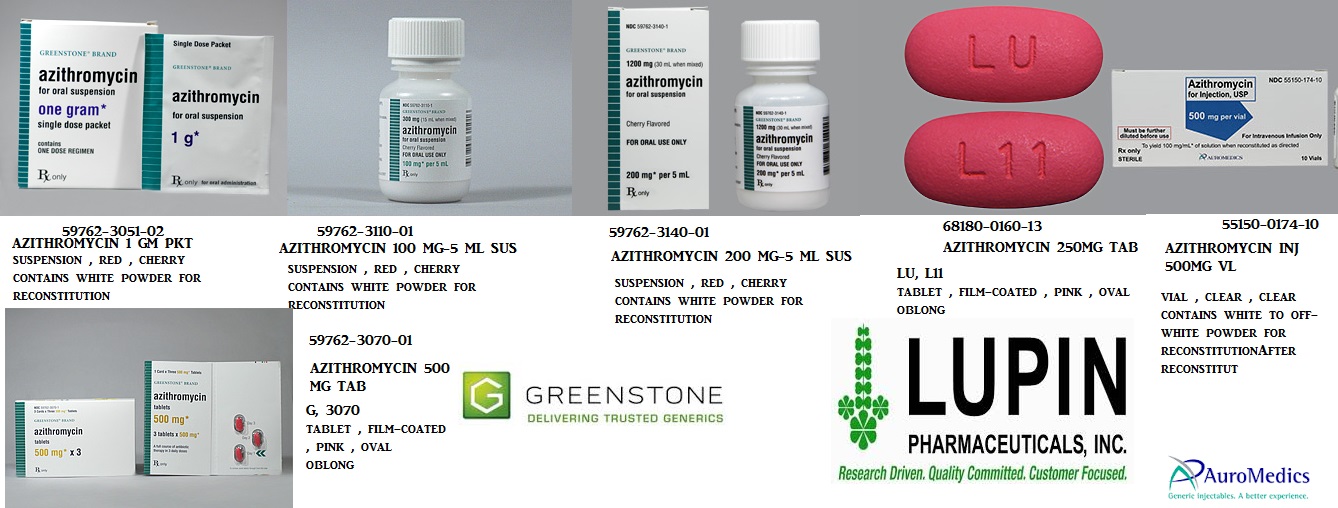
Some Foods May Impact Amoxicillin’s Absorption
Some medical evidence shows that certain foods and drinks may slow down amoxicillin’s effects. According to some studies, green tea interferes with the absorption of antibiotics.
Caffeine is generally considered safe to consume while taking amoxicillin. However, the relationship between green tea, which is highly caffeinated, and amoxicillin is still under investigation because of caffeine’s potential effect on gut bacteria. Researchers say they need data from more studies to determine if and how much caffeine may interfere with amoxicillin absorption.
Unlike some medications, amoxicillin does not come with label warnings to avoid alcohol when taking the medication. Multiple studies show that drinking alcoholic beverages slows down the rate at which the body absorbs the drug but does not affect the overall extent of its absorption.
How Long Will Amoxicillin Work After Taking It?
Amoxicillin works the entire time it’s in your body. The maximum safe dose of amoxicillin is 4,000 mg per day, according to the drug’s label, but few people need to take that much.
The maximum safe dose of amoxicillin is 4,000 mg per day, according to the drug’s label, but few people need to take that much.
Dosing schedules keep amoxicillin in your system continuously, making the drug work more effectively to fight your infection. The University of California San Francisco recommends the following dosage limits:
- Suspension: 1,000 mg per dose twice a day (2000 mg in total)
-
Tablets: 1,000 mg per dose (two 500 mg tablets) taken twice a day -
Amoxicillin-clavulanate (Augmentin) tablets: 2,000 mg (two 1,000 mg tablets) per dose, twice a day, if you have acute bacterial sinusitis with systemic illness, a high fever or a compromised immune system
While amoxicillin does work the entire time it’s in your system, it becomes less effective after the first few hours. This is why doctors prescribe it in multiple daily doses and not one larger dose per day. Spacing out doses gives your body a fresh supply of amoxicillin every few hours, allowing you to fight an infection around the clock.
Doctors may prescribe more frequent doses of amoxicillin if they feel you would benefit from more consistent support while you heal. For instance, doctors usually treat a lower respiratory tract infection with 875 mg of amoxicillin taken twice a day. However, doctors sometimes prescribe 500 mg of amoxicillin taken three times a day to keep the drug at more consistent levels in your body.
How Long Does Amoxicillin Stay in Your System?
Amoxicillin stays in your system for 24 hours. But the estimate depends on the dosage. The amount of amoxicillin taken at one time impacts its half-life.
A drug’s half-life is the time it takes for only half of the drug to be present in your blood after your last dose. Amoxicillin’s half-life is around one hour.
Six hours after taking amoxicillin, less than 2% of the drug will still be in your system. Your body will process the last traces of the drug for the rest of the day.
Larger doses of amoxicillin (ones greater than 500 mg in capsule or tablet form or 5. 5 mcg/mL in suspension form) get processed more slowly. Such dosages have a half-life of two hours and will take about 12 hours to reach the same 2% marker. The medication remains in your system about twice as long as lower doses.
5 mcg/mL in suspension form) get processed more slowly. Such dosages have a half-life of two hours and will take about 12 hours to reach the same 2% marker. The medication remains in your system about twice as long as lower doses.
When to Stop Taking Amoxicillin
One of the chief labeling guidelines of amoxicillin is to finish the prescription. Doctors reinforce this. Do not stop taking amoxicillin until your doctor says it is OK or until you run out of your prescription.
Findings from one 2022 clinical research trial suggested that a short course of Amoxicillin (5 days) was just as effective as a longer course (10 days) for uncomplicated commonly acquired pneumonia in children under 10 years old.
Antibiotics like amoxicillin need time to clear bacteria out of your body. Most people feel better long before amoxicillin eradicates all of the bad bacteria, leading them to believe that they are cured. This is not true.
If infectious bacteria remain in your body and you stop short of finishing your prescription of amoxicillin, you could suffer a relapse of your infection. Taking your medication exactly as prescribed prevents this from happening. If you have questions about amoxicillin, instructions for your specific prescription, or how amoxicillin interacts with other medication speak, with your doctor.
Taking your medication exactly as prescribed prevents this from happening. If you have questions about amoxicillin, instructions for your specific prescription, or how amoxicillin interacts with other medication speak, with your doctor.
Please seek the advice of a medical professional before making health care decisions.
TELL US WHAT YOU THINK
Did You Find Drugwatch Helpful?
Yes
No
Thank you for your feedback. Do you have any thoughts you’d like to share about Drugwatch.com?
This article changed my life!
This article was informative
I have a question
How can we improve this page?
This article contains incorrect information
This article doesn’t have the information I’m looking for
I have a question
How can we improve this page?
Thank You for Your Feedback
We appreciate your feedback. One of our content team members will be in touch with you soon.
One of our content team members will be in touch with you soon.
We appreciate your feedback. One of our content team members will be in touch with you soon.
Flemoxin Solutab 500 mg № 20 tab (Amoxicillin)
Instructions for medical use
medicinal product
Flemoxin Solutab®
Trade name
Flemoxin Solutab®
International generic name
Amoxicillin
Pharmaceutical form
Dispersible tablets 125 mg, 250 mg, 500 mg, 1000 mg
Composition
One tablet contains
active ingredient: amoxicillin in the form of amoxicillin trihydrate
125 mg, 250 mg, 500 mg, 1000 mg
excipients: dispersible cellulose, microcrystalline cellulose, crospovidone, vanillin, tangerine flavor, lemon flavor, saccharin, magnesium stearate.
Description
Tablets from white to light yellow, oval, with the company logo and a digital designation on one side (125 mg – “231”, 250 mg – “232”, 500 mg – “234”, 1000 mg – ” 236″) and risk, on the other side.
Pharmacotherapeutic group
Antimicrobials for systemic use. Antibacterial drugs for systemic use. Beta-lactam antibiotics – penicillins. Broad spectrum penicillins. Amoxicillin.
ATC code J01CA04
Pharmacological properties
Pharmacokinetics
Absorption
Amoxicillin completely dissociates in aqueous solution at physiological pH. Amoxicillin is rapidly and well absorbed after oral administration. When administered orally, the bioavailability of amoxicillin is approximately 70%. The time to reach maximum plasma concentration (Tmax) is approximately 1 hour.
Distribution
Approximately 18% of the total amount of amoxicillin in plasma is bound to plasma proteins. The apparent volume of distribution is approximately 0.3-0.4 l/kg.
Amoxicillin is found in the gallbladder, abdominal tissues, skin, adipose tissue, muscle, synovial and peritoneal fluids, bile and pus. Amoxicillin does not penetrate well into the cerebrospinal fluid.
Amoxicillin, like most penicillins, can be found in breast milk. Amoxicillin crosses the placental barrier.
Amoxicillin crosses the placental barrier.
Biotransformation
Amoxicillin is partially excreted in the urine as an inactive acid in amounts equivalent to 10-25% of the administered dose.
Elimination
Amoxicillin is primarily excreted via the kidneys.
The half-life is on average 1 hour, and the average value of the total clearance is approximately 25 l / h. Approximately 60-70% of amoxicillin is excreted unchanged in the urine during the first 6 hours after taking a single dose of 250 mg or 500 mg. The period of excretion of 50-85% of amoxicillin in the urine was 24 hours.
Simultaneous administration of probenecid slows down the excretion of amoxicillin.
Age
The half-life of amoxicillin is approximately the same in children aged 3 months to 2 years, in older children and in adults. In very young children (including premature newborns), amoxicillin is administered no more than twice a day during the first week of life, taking into account the immaturity of the renal route of excretion. Since the elderly may experience a decrease in renal function, for this category of patients it is necessary to carefully select the dose and periodically monitor renal function.
Since the elderly may experience a decrease in renal function, for this category of patients it is necessary to carefully select the dose and periodically monitor renal function.
Gender
After oral administration of amoxicillin to males and females, there was no significant effect of gender on the pharmacokinetics of amoxicillin.
Impaired renal function
The total plasma clearance of amoxicillin decreases in proportion to the deterioration of renal function.
Hepatic insufficiency
Caution should be exercised in patients with hepatic insufficiency, and periodic monitoring of liver function should also be carried out.
Pharmacodynamics
Mechanism of action
Amoxicillin is a semi-synthetic penicillin (beta-lactam antibiotic) that inhibits one or more of the enzymes (known as penicillin-binding proteins, PBPs) that play a role in peptidoglycan biosynthesis. Peptidoglycan is a structural element of the bacterial cell wall. Inhibition of peptidoglycan synthesis leads to weakening of the cell wall, which is usually followed by lysis and death of the bacterial cell.
Amoxicillin is broken down by beta-lactamases, which can be produced by some bacteria, making them resistant to amoxicillin. Thus, the spectrum of activity of unprotected amoxicillin does not cover microorganisms that produce these enzymes.
The time above the minimum inhibitory concentration (t > MIC) is considered the main determinant of the effectiveness of amoxicillin.
Mechanisms of resistance
The main mechanisms of resistance to amoxicillin are:
• enzymatic inactivation by beta-lactamases;
• mutation of PBP, resulting in a decrease in the affinity of the antibiotic to the target.
Impenetrability of the bacterial cell wall or active clearance of the antibiotic from the cell (efflux) may cause or contribute to bacterial resistance in Gram-negative bacteria.
Indications for use
Infections caused by susceptible microorganisms, including:
– acute bacterial sinusitis
– acute otitis media
– acute streptococcal tonsillitis and pharyngitis
– exacerbation of chronic bronchitis
– community-acquired pneumonia
— acute cystitis
— asymptomatic bacteriuria during pregnancy
– acute pyelonephritis
– typhoid and paratyphoid fever
– dental abscess with spreading cellulitis
– prosthetic joint infections
– Lyme disease
– prevention of endocarditis
– treatment of digestive tract diseases associated with Helicobacter pylori
When choosing an antibiotic, official guidelines for antibiotic therapy should be taken into account.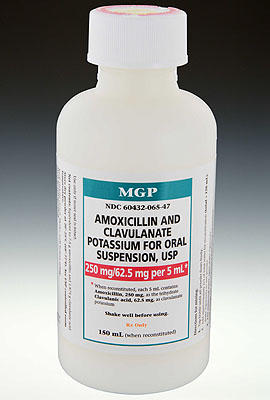
Dosage and Administration
Flemoxin Solutab® is for oral use only.
The use of Flemoxin Solutab® does not depend on food intake.
Flemoxin Solutab® tablets can be swallowed whole with a glass of water, or a suspension can be prepared by mixing well in 100 ml of water and drinking. The resulting slightly sweet suspension has a light tangerine-lemon taste.
Doses
When choosing a dose of Flemoxin Solutab® for the treatment of certain infections, the following factors should be considered:
• Expected pathogens and their likely susceptibility to antibacterial drugs
• Severity and location of infection
• Age, weight, and renal function of the patient, as described below.
The duration of treatment depends on the type of infection and the clinical response of the patient and should be as short as possible. Some infections require longer treatment.
Adults and children ≥ 40 kg
Indication* Dose*
Acute bacterial sinusitis 250-500 mg every 8 hours or 750 mg – 1 g every 12 hours
For severe infections 750 mg – 1 g every 8 hours
For the treatment of acute cystitis, 3 g twice a day is possible
Asymptomatic bacteriuria during pregnancy
Acute pyelonephritis
Dental abscess with spreading cellulitis
Acute cystitis
Acute otitis media 500 mg every 8 hours or 750 mg — 1 g s every 12 hours
For severe infections 750 mg – 1 g every 8 hours for 10 days
Acute streptococcal tonsillitis and pharyngitis
Exacerbation of chronic bronchitis
Community-acquired pneumonia 500 mg – 1 g every 8 hours
Typhoid and paratyphoid fever 500 mg – 2 g every 8 hours
Prosthetic joint infections 500 mg – 1 g every 8 hours
Endocarditis prophylaxis 2 g orally, single dose 30-60 minutes before procedure
Helicobacter pylori eradication 750 mg – 1 g twice daily in combination with a proton pump inhibitor (eg , omeprazole) and another antibiotic (eg, clarithromycin, metronidazole) for 7 days
Lyme disease Early stage: 500 mg – 1 g every 8 hours, maximum daily dose of 4 g, divided into several doses, for 14 days (10 to 21 days)
Late stage (systemic infection): 500 mg – 2 g every 8 hours, maximum daily dose of 6 g divided into several doses for 10-30 days
*The official clinical guidelines for each indication should be taken into account.
Children ˂ 40 kg
Children can be treated with Flemoxin Solutab® tablets.
Children over 40 kg should take the recommended adult dose.
Recommended dose in children weighing <40 kg:
Indication* Dose*
Acute bacterial sinusitis 20-90 mg/kg/day in divided doses
Acute otitis media
Community-acquired pneumonia
Acute cystitis 9000 3 Acute pyelonephritis
Dental abscess with spreading cellulitis
Acute streptococcal tonsillitis and pharyngitis 40-90 mg/kg/day divided into several doses*
Typhoid and paratyphoid fever 100 mg/kg/day divided into three doses
Endocarditis prophylaxis 50 mg/kg po, single dose 30-60 minutes before procedure
Lyme disease Early: 25-50 mg/kg/day divided in three doses over 10-21 days
Late stage (systemic infection): 100 mg/kg/day divided into three doses over 10-30 days
+ Official guidelines for each indication should be taken into account.
* Only when administered in the upper dose range should consideration be given to twice daily administration.
Elderly patients
No dose adjustment required.
Use in patients with renal insufficiency
Glomerular filtration rate (ml/min) Adults and children ≥ 40 kg Children ˂ 40 kg#
Over 30 No adjustment required No adjustment required
10-30 Maximum 500 mg twice daily 15 mg/kg twice daily (maximum 500 mg twice daily)
Less than 10 Maximum 500 mg daily 15 mg/kg once daily (maximum 500 mg daily)
# In most cases, parenteral treatment is preferred.
Use in patients receiving hemodialysis
Amoxicillin may be removed from the blood during hemodialysis.
Hemodialysis
Adults and children ≥ 40 kg 15 mg/kg/day once
One additional dose of 15 mg/kg is required before hemodialysis. To restore the level of circulation of the drug after hemodialysis, it is necessary to administer an additional dose of 15 mg/kg.
Use in patients on peritoneal dialysis
Maximum 500 mg amoxicillin per day.
Use in patients with impaired liver function
Caution should be exercised and regular monitoring of liver function.
Side effects
The frequency of adverse reactions is defined as follows: very often (≥1/10), often (≥1/100, <1/10), infrequently (≥1/1000, <1/100), rarely (≥ 1/10,000 to <1/1000), very rare (<1/10,000), not known (frequency cannot be estimated from available data).
The most common side effects are diarrhea, nausea and skin rash.
Common
Diarrhea and nausea
Skin rash
Rare
Vomiting
Urticaria and pruritus
Very rare
Skin and mucosal candidiasis
Reversible leukopenia (including severe neutropenia or agranulocytosis), reversible platelet penia and hemolytic anemia
– lengthening bleeding time and prothrombin time
severe allergic reactions such as angioedema, anaphylaxis, serum sickness and hypersensitivity vasculitis
– hyperkinesia, dizziness and convulsions
– antibiotic-associated colitis (including pseudo-membranous colitis and hemorrhagic colitis)
– black, hairy tongue
– superficial discoloration of teeth (reported in children. Good oral hygiene helps prevent tooth discoloration,
Good oral hygiene helps prevent tooth discoloration,
– Hepatitis and cholestatic jaundice, mild elevation of AST and/or ALT ), drug rash with eosinophilia and systemic symptoms (DRESS syndrome)
Interstitial nephritis
Crystalluria
Unknown
Jarisch-Herxheimer reaction, acute coronary syndrome with hypersensitivity (Kounis syndrome)
Aseptic meningitis
Contraindications new series or to one of the excipients
– history of immediate-type hypersensitivity (anaphylaxis) to another beta-lactam antibiotic (eg, cephalosporin, carbapenem, monobactam)
Drug interactions
Probenecid
Simultaneous use of probenecid is not recommended. Probenecid reduces the secretion of amoxicillin in the renal tubules. Simultaneous use of probenecid can lead to an increase in the level of amoxicillin in the blood.
Allopurinol
Co-administration of allopurinol during treatment with amoxicillin increases the likelihood of developing allergic skin reactions.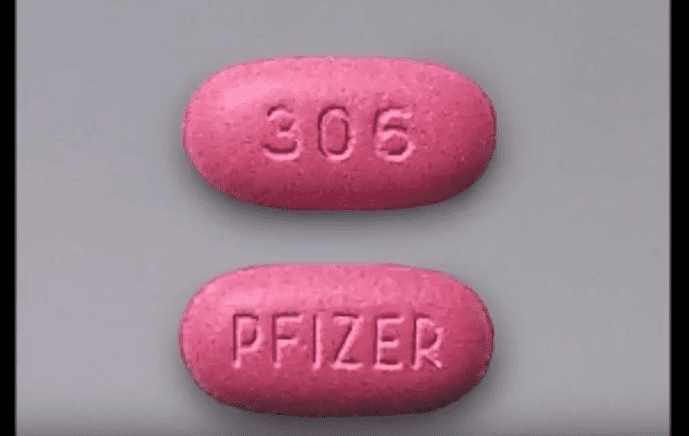
Tetracyclines
Tetracyclines and other bacteriostatic antibiotics may interfere with the bactericidal action of amoxicillin.
Oral anticoagulants
If co-administration with anticoagulants is required, prothrombin time should be carefully monitored at the start of treatment and after discontinuation of amoxicillin treatment, as the risk of bleeding increases. It may also be necessary to adjust the dose of oral anticoagulants.
Methotrexate
Penicillins may reduce the excretion of methotrexate, which may be accompanied by increased toxicity.
Special instructions
Hypersensitivity reactions
Before starting treatment with amoxicillin, attention should be paid to previous hypersensitivity reactions to penicillins, cephalosporins or other beta-lactam antibiotics.
Severe and sometimes fatal hypersensitivity reactions (including anaphylactic reactions and severe skin reactions) have been reported in patients treated with penicillin. Such reactions are more common in people who have previously experienced hypersensitivity to penicillin and those with increased body reactivity. If an allergic reaction occurs, amoxicillin treatment should be discontinued and an appropriate alternative treatment instituted.
If an allergic reaction occurs, amoxicillin treatment should be discontinued and an appropriate alternative treatment instituted.
Acute hypersensitivity coronary syndrome (Konis syndrome)
In rare cases, hypersensitivity reactions (acute hypersensitivity coronary syndrome) have been reported during treatment with amoxicillin, and a decision should be made on the appropriate treatment.
Non-susceptible organisms
Amoxicillin is not suitable for the treatment of certain infections, unless the pathogen has been documented and is susceptible, or if there is a high probability that the pathogen is treatable with amoxicillin. This is particularly applicable to treatment decisions for patients with urinary tract infections and serious infections of the ear, nose, and throat.
Seizures
Seizures may occur in patients with renal insufficiency, in patients receiving high doses, and in patients with predisposing factors (eg, epileptic seizures, treatment of epilepsy or meningeal disorders in the past).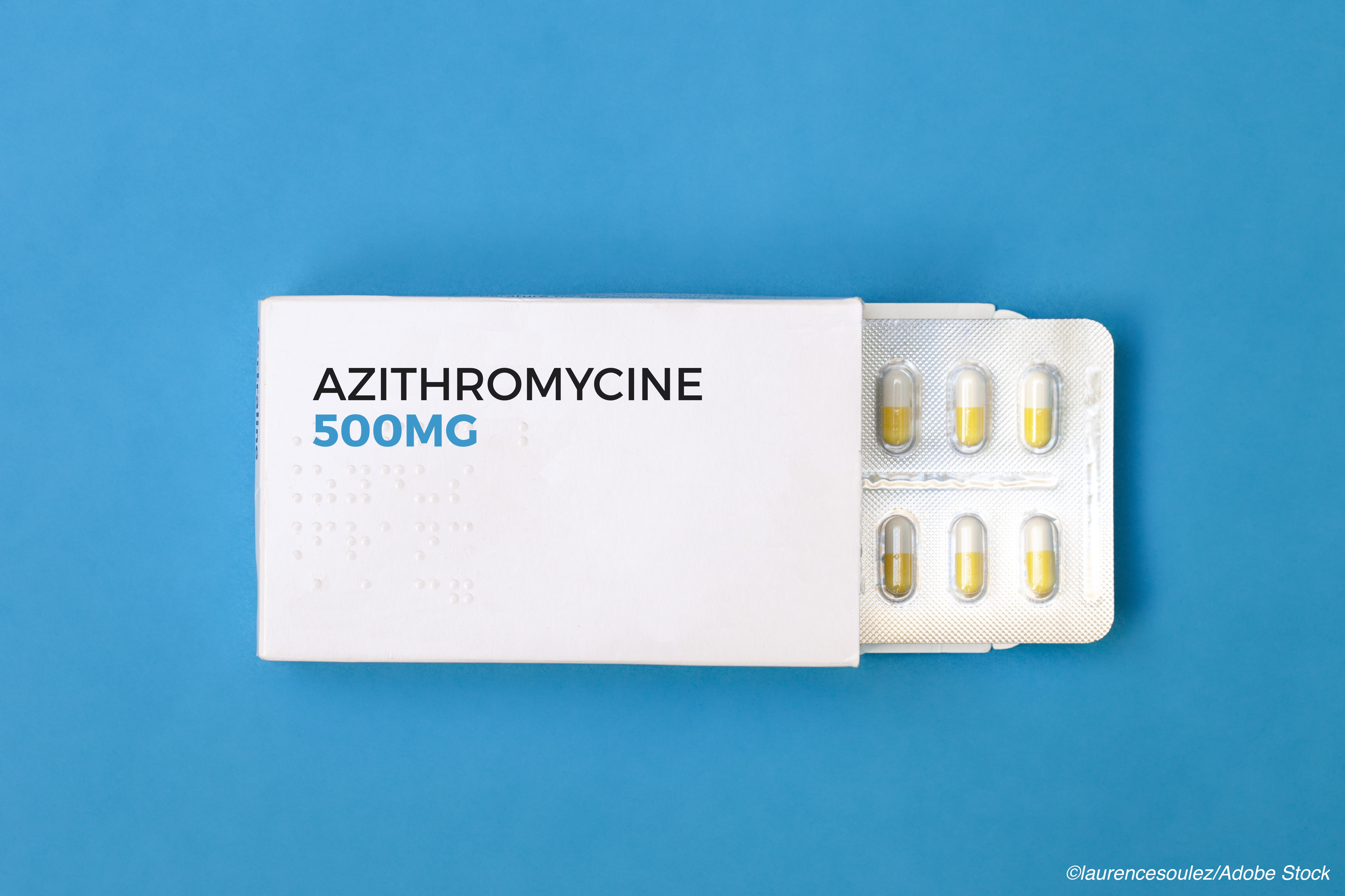
Renal insufficiency
In patients with renal insufficiency, the dose should be adjusted according to the degree of renal insufficiency.
Skin reactions
The occurrence of generalized erythema with pustules and fever at the initial stage of treatment may be a symptom of acute generalized exenthematous pustulosis (AGEP). In this case, taking amoxicillin must be stopped, and subsequent use is contraindicated.
Amoxicillin should be avoided if infectious mononucleosis is suspected, as subsequent rash may be associated with this disease after amoxicillin use.
Jarisch-Herxheimer reaction
Jarisch-Herxheimer reaction has been observed following treatment of Lyme disease with amoxicillin. This is directly related to the bactericidal action of amoxicillin on the bacteria that causes Lyme disease, the spirochete Borrelia burgdorferi. The patient must be reassured that this is a common consequence of antibiotic treatment for Lyme disease and usually goes away on its own.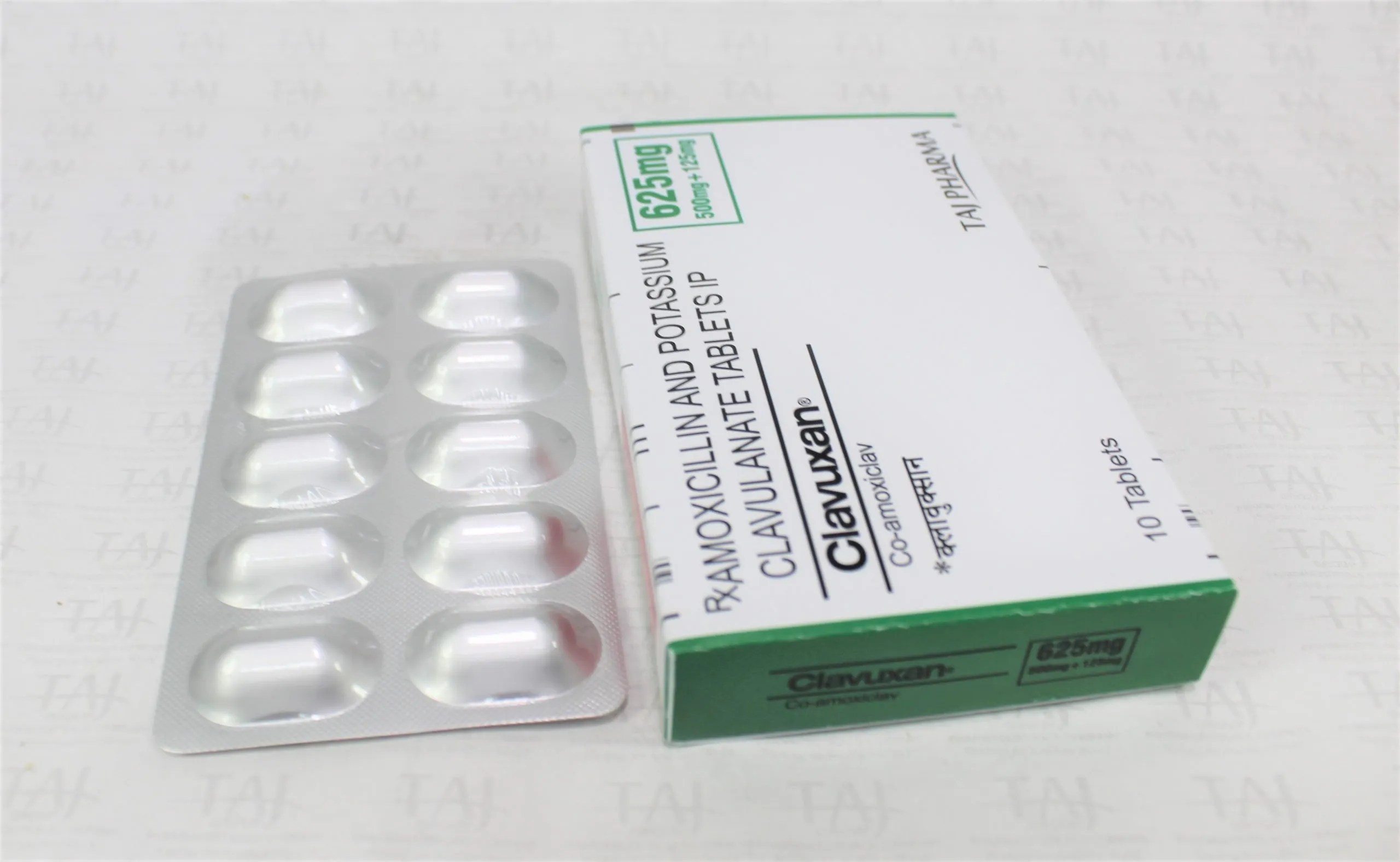
Overgrowth of non-susceptible organisms
Prolonged use of antibiotics can sometimes lead to overgrowth of non-susceptible organisms.
Antibiotic-associated colitis has been reported and is associated with almost all antibacterial drugs. Its severity can range from mild to life-threatening. Therefore, it is important to consider this diagnosis in patients in the event of diarrhea during or after the use of antibiotics. In the case of antibiotic-associated colitis, amoxicillin should be stopped immediately and a doctor should be consulted and appropriate treatment instituted. Drugs that inhibit peristalsis are contraindicated in this situation.
Long-term treatment
During long-term therapy, periodic monitoring of the functioning of organ systems, including kidney, liver and hematopoietic function, is recommended. There are reports of an increase in liver enzymes and a change in the number of blood cells.
Anticoagulants
In patients receiving amoxicillin, cases of increased prothrombin time have been reported rarely. With the simultaneous appointment of anticoagulants, proper monitoring should be carried out. It may be necessary to adjust the dose of oral anticoagulants to maintain the desired level of anticoagulation.
With the simultaneous appointment of anticoagulants, proper monitoring should be carried out. It may be necessary to adjust the dose of oral anticoagulants to maintain the desired level of anticoagulation.
Crystalluria
In patients with reduced diuresis, crystalluria has been observed very rarely, mainly associated with parenteral treatment. With the introduction of high doses of amoxicillin, it is desirable to take a sufficient amount of fluid and provide good diuresis to reduce the likelihood of amoxicillin-associated crystalluria. In patients with a bladder catheter, the catheter should be checked regularly for patency.
Impact on diagnostic tests
An increase in the level of amoxicillin in the serum and urine may affect the results of some laboratory tests. Due to the high concentrations of amoxicillin in the urine, chemical methods often give false positive results.
If glucose is detected in the urine during treatment with amoxicillin, it is recommended to use enzymatic methods for determining glucose oxidase.
The presence of amoxicillin may interfere with estriol test results in pregnant women.
Pediatric use
Not recommended for use in children under 1 year of age. Children under 9 years of age are not recommended to use the dosage of Flemoxin Solutab® 500 mg and 1000 mg.
Pregnancy and lactation
Limited data on the use of amoxicillin during pregnancy do not indicate an increased risk of congenital malformations. If it is necessary to prescribe the drug during pregnancy, an assessment should be made in advance of the ratio of the potential risk to the fetus and the expected benefit to the woman. Amoxicillin passes into breast milk in small amounts. Use during lactation is possible, however, to prevent possible sensitization of the child, it is recommended to stop breastfeeding.
Features of the effect of the drug on the ability to drive a vehicle or potentially dangerous mechanisms
The drug should be taken with caution by persons driving vehicles or working with other mechanisms, due to the risk of possible adverse reactions from the nervous system.
Overdose
Symptoms: nausea, vomiting, diarrhea; violation of water and electrolyte balance, convulsions (in patients with impaired renal function or in those receiving high doses of the drug).
Treatment: gastric lavage, use of enterosorbents (activated charcoal), saline laxatives, correction of water and electrolyte balance; if necessary, apply hemodialysis.
Release form and packaging
5 tablets in a blister pack made of PVC film and aluminum foil. 4 contour packs, together with instructions for medical use in the state and Russian languages, are placed in a cardboard box.
Storage conditions
Store in a place protected from light, at a temperature not exceeding 25 °C.
Keep out of the reach of children!
Shelf life
5 years
Do not use after the expiry date!
Terms of dispensing from pharmacies
By prescription
Name and country of the manufacturing organization
Astellas Pharma Europe B.V., Silviusweg 62, 2333 EE, Leiden, Netherlands
Name and country of the marketing authorization holder
Astellas Pharma Europe B. V. , Silviusweg 62, 2333 EE, Leiden, The Netherlands
V. , Silviusweg 62, 2333 EE, Leiden, The Netherlands
Name, address and contact details (telephone, fax, e-mail) of the organization in the Republic of Kazakhstan that accepts claims (proposals) on the quality of medicines from consumers and is responsible for post-registration monitoring of the safety of medicines: B.V. in the Republic of Kazakhstan
050059, Republic of Kazakhstan, Almaty, Al-Farabi Ave. 15, Nurly Tau business center, building 4B, office No. 19-4B-10
Phone/fax +7 727 311 13 90
[email protected]
Amoxicillin Express, 500 mg, dispersible tablets, 20 pcs.
Hypersensitivity reactions
Before starting treatment with amoxicillin, attention should be paid to the presence of hypersensitivity reactions to penicillins, cephalosporins or other beta-lactam antibiotics in history.
Severe and sometimes fatal hypersensitivity reactions (including anaphylactic reactions and severe skin reactions) have been reported in patients treated with penicillin. The development of these reactions is more likely in people with a history of hypersensitivity to penicillins and in individuals with atopy. If an allergic reaction occurs, amoxicillin treatment should be discontinued and an appropriate alternative treatment instituted.
The development of these reactions is more likely in people with a history of hypersensitivity to penicillins and in individuals with atopy. If an allergic reaction occurs, amoxicillin treatment should be discontinued and an appropriate alternative treatment instituted.
Acute coronary syndrome associated with hypersensitivity (Kounis syndrome)
In rare cases, hypersensitivity reactions (acute coronary syndrome associated with hypersensitivity) have been reported during treatment with amoxicillin. If this reaction occurs, amoxicillin should be discontinued and appropriate treatment instituted.
Non-susceptible organisms
For some types of infections, before prescribing amoxicillin, it is necessary to first establish the pathogen and its sensitivity to the drug, or to make sure that the pathogen is likely to be treatable with amoxicillin. In particular, this applies to patients with urinary tract infections and severe infections of the ear, nose and throat.
Seizures
Seizures may occur in patients with renal insufficiency, in patients receiving high doses of the drug, as well as in patients with predisposing factors – a history of seizures, treatment of epilepsy or meningitis, etc.
Renal failure
In patients with renal insufficiency, the dose should be adjusted according to the degree of renal insufficiency.
Skin reactions
The occurrence of generalized erythema with fever accompanied by pustules at the initial stage of treatment may be a symptom of ADEP (see section “Side Effects”). In this case, taking amoxicillin must be stopped, and its subsequent use will be contraindicated in any situation.
Amoxicillin should be avoided in patients suspected of having infectious mononucleosis because a measles-like rash (exanthema) associated with the use of amoxicillin in this disease may occur.
Jarosch-Herxheimer reaction
Jarisch-Herxheimer reaction has been observed following the use of amoxicillin in patients with Lyme disease.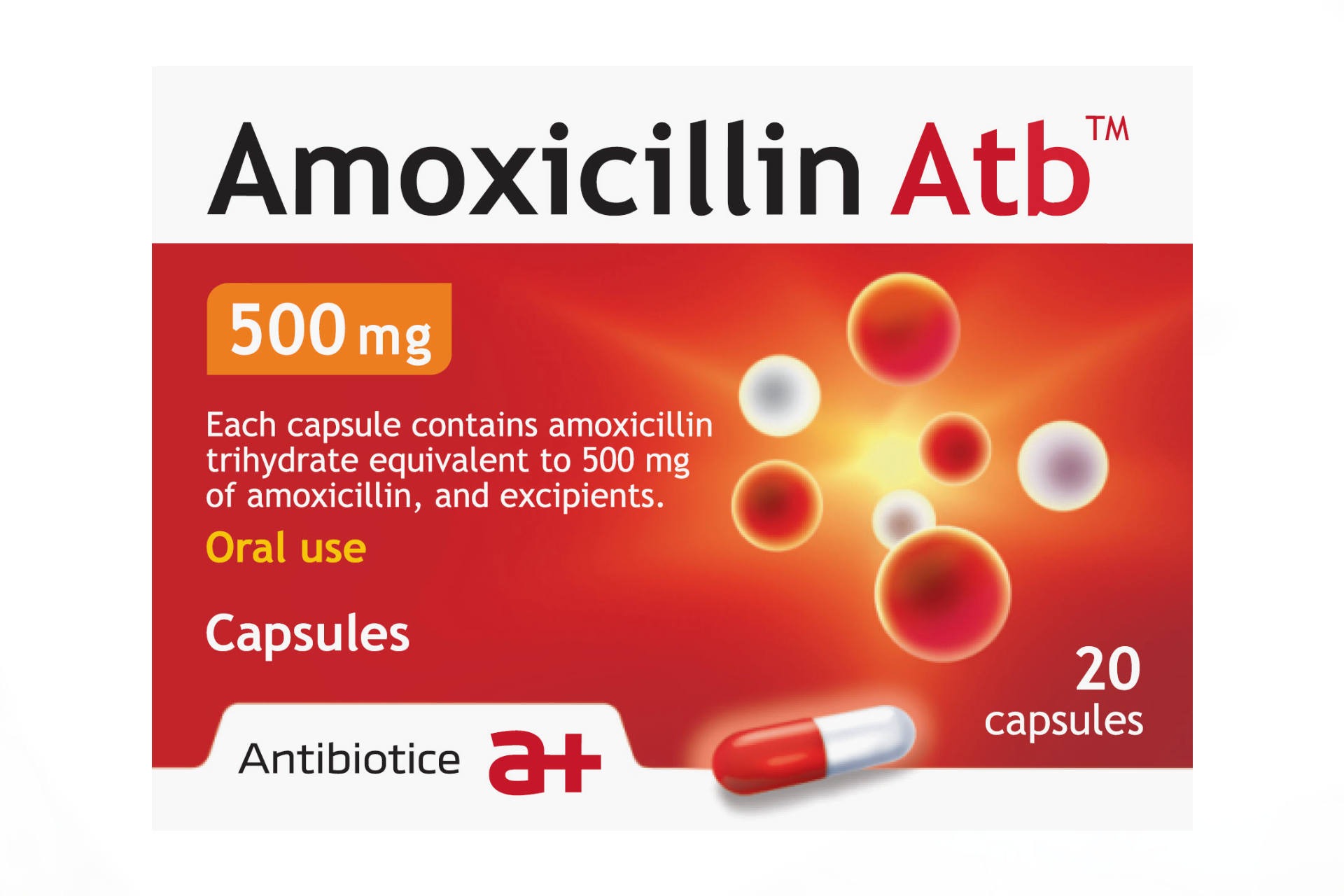 This reaction is associated with the bactericidal action of amoxicillin on the causative agents of Lyme disease, the spirochete Borrelia burgdorferi. Patients should be advised that this reaction is a common side effect of antibiotic treatment for Lyme disease and usually resolves on its own.
This reaction is associated with the bactericidal action of amoxicillin on the causative agents of Lyme disease, the spirochete Borrelia burgdorferi. Patients should be advised that this reaction is a common side effect of antibiotic treatment for Lyme disease and usually resolves on its own.
Overgrowth of non-susceptible organisms
Prolonged use of the drug can sometimes lead to overgrowth of non-susceptible organisms (superinfection).
Antibiotic-associated colitis may develop with the use of almost all antibacterial drugs. Its severity can be from mild to severe (life-threatening). Therefore, it is important to consider the possibility of this diagnosis in patients in the event of diarrhea during or after the use of antibiotics. In the event of diarrhea, the patient should immediately stop taking amoxicillin, consult a doctor and start appropriate treatment. Drugs that inhibit peristalsis are contraindicated in this situation.
Long-term treatment
With long-term therapy, it is necessary to periodically monitor the state of the function of the hematopoietic organs, kidneys and liver. An increase in the activity of “liver” enzymes and a change in the number of blood cells were reported.
An increase in the activity of “liver” enzymes and a change in the number of blood cells were reported.
Anticoagulants
Rare cases of prolonged prothrombin time have been reported in patients treated with amoxicillin. With the simultaneous appointment of the drug with anticoagulants, appropriate monitoring should be carried out, and it may be necessary to adjust the dose of oral anticoagulants to maintain the required level of blood coagulation.
Crystalluria
Crystalluria has very rarely been observed in patients with reduced diuresis, mainly with parenteral therapy. When using high doses of amoxicillin, it is recommended to maintain adequate fluid intake and diuresis to reduce the likelihood of developing crystalluria associated with the use of amoxicillin. In patients with a catheterized bladder, the patency of the catheter should be checked regularly.
Impact on diagnostic tests
An increase in serum and urine levels of amoxicillin may interfere with some laboratory tests.

 In general, generics usually cost less than brand-name drugs.
In general, generics usually cost less than brand-name drugs. But if it’s almost time for your next dose, just skip the missed dose and take your next dose at its regular time.
But if it’s almost time for your next dose, just skip the missed dose and take your next dose at its regular time.

